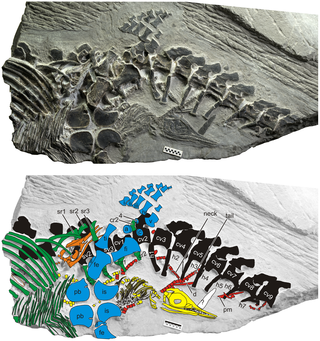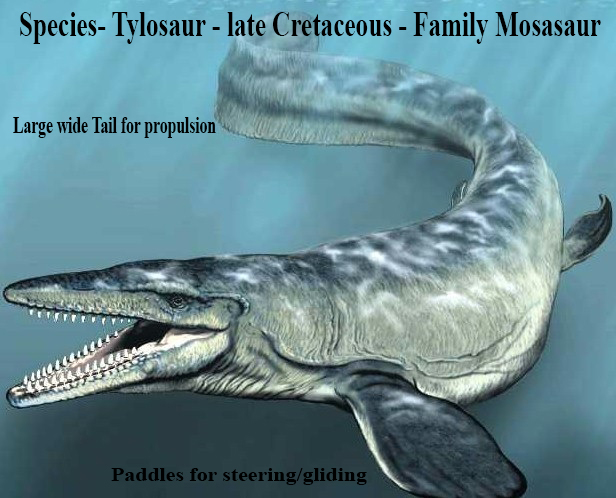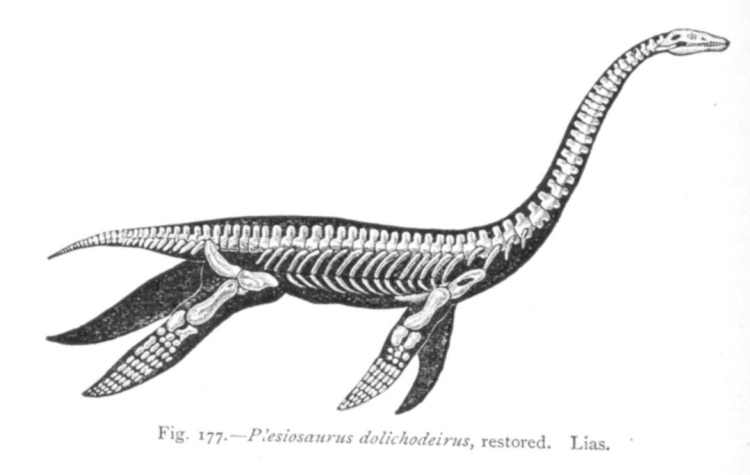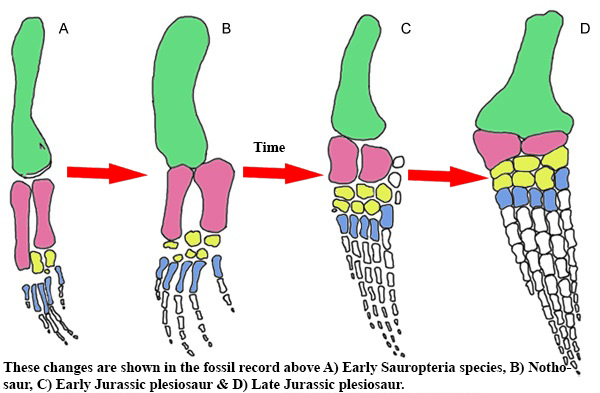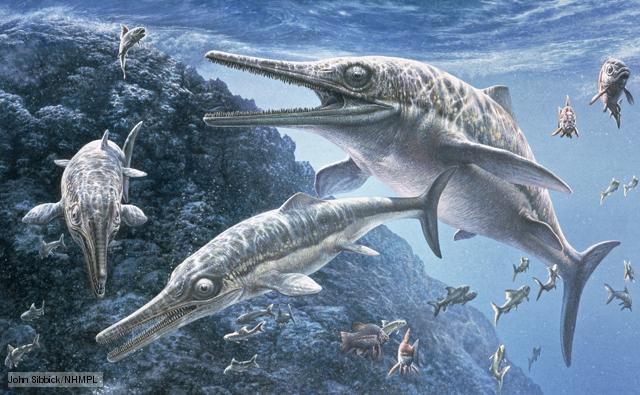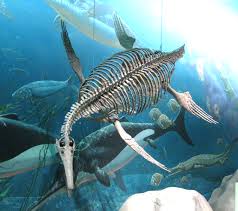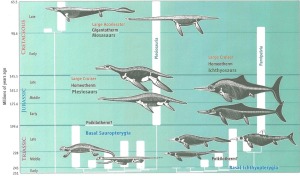Because the Permian Extinction depopulated the world’s oceans, some reptiles took to the water to become the first air breathing hunters in the oceans. They took on a variety of forms and some of which, including the ichthyosaurs and plesiosaurs, rose to the top of the food chain.
Ichthyosaurs
The ichthyosaurs were a group of air breathing, marine reptiles that resembles present day dolphins or tuna. They first appeared 245 million years ago and survived and thrived through the Mesozoic era. Ichthyosaurs averaged between 2-4m in length, with some species smaller and others growing much larger.
Ichthyosaurs ranged widely in size, and survived for so long, that they are likely to have had a wide range of prey but it is suggested that most commonly they fed on small, fast moving prey. Typical ichthyosaurs had very large eyes which were protected inside a bony ring, suggesting that sight was a predominant sense. They may have hunted at night or at great depths where visibility was reduced and pressure was increased.
They had a small head, long, slender jaws, which were filled with numerous, pointed, closely set teeth. The jaws were fast snapping and once prey was caught between the mesh like teeth, it was swallowed whole.
Ichthyosaurs had fin like limbs which they used, possibly, for directional control. Their propulsion would have come from their powerful, shark-like tail.
Ichthyosaurs were viviparous (gave birth to live young). This is evident as some fossils were preserved with young inside the abdominal cavity. Although this lead to a debate among scientists as to whether ichthyosaurs were cannibals, it was widely regarded that the smaller ichthyosaurs were embryos.
Shastasaurus
Shastasaurus was a genus of Ichthyosaur that lived in the Triassic period. One of the largest marine reptiles ever found, it differed greatly from its cousins. Shastasaurus had a slender body, a very short toothless snout, and so it was proposed that it was a suction feeder, mainly of soft bodied cephalopods although current research may discredit this hypothesis.
Plesiosaurs
The plesiosaurs were a group of marine reptiles that were air breathing, viviparous and had a worldwide ocean distribution. They evolved from the nothasaurs in the Triassic and survived up until the K/T extinction 66 million years ago.
Plesiosaurs are divided into two groups: Plesiosauroids (plesiosaurs), with long, snake-like necks, tiny heads, and wide bodies, and the Pliosauroids (pliosaurs), with large heads, short necks and very strong jaws.
Plesiosauroids
For a long time it was speculated that the very long necks of these reptiles were used as an underwater fishing apparatus. It was believed that the animal would swim along near the surface holding its head and neck out of the water and then use them to spear prey underwater. However it has become evident that the head and neck of the plesiosaurs were not strong or flexible enough to have been used in this way. Even the largest plesiosaurs, reaching up to 12m in length, were quite benign fish feeders. Despite their sleek body plan, the plesiosaurs were not, by far, the fastest of the marine reptiles and most would have been out swam by ichthyosaurs.
Pliosauroids
As a general rule the pliosaurs of the late Jurassic and cretaceous were larger, stronger and more aggressive than their plesiosaur cousins. Similar to their underwater neighbours, the prehistoric sharks, it is believed their diet consisted of fish, squid and other marine reptiles.
Leipleurodon was a pliosaur that reached lengths of 12m. An ambush predator, four strong paddle-like limbs suggest it was a strong swimmer. It was the apex predator of the Middle to Late Jurassic seas that covered Europe.
References:
Dinosaurs: a concise natural history, Fastovsky, D. E., Weishampel, D.B., Cambridge; New York : Cambridge University Press, 2009. ISBN; 9780521889964.
Dinosaurs, spitfires and sea dragons, McGowan, C., Cambridge, Mass: Harvard University Press, 1992. ISBN: 067420770X.
Motani, R., 2009. The Evolution of Marine Reptiles, Evolution Education Outreach, 2, 224–235.
Marine reptiles: Adaptions, Taxonomy, Distribution and Life Cycles, Marine Ecology- Bertolero, A., Donoyan, J., Weitzmann, B., Encyclopedia of Life Support Systems.
Jiang, D., Motani, R., Hao, W., Schmitz, L., Rieppel, O., Sun, Y., Sun, Z., 2008. New primitive ichthyosaurian (Reptilia, Diapsida) from the Middle Triassic of Panxian, Guizhou, southwestern China and its position in the Triassic biotic recovery, Progress in Natural Science , 18, 1315-1319.
Vertebrate Palaentology, Benton, M.J., HarperCollins Academic, London, W68JB, UK, 1990. ISBN: 0-00-302092-4.
Images:
http://www.prehistoric-wildlife.com/
http://savalli.us/BIO113/Labs/09.Reptiles.html
http://carnivoraforum.com/topic/9762542/1/
http://alreadyanswered.org/q/sea-dinos/plio/
Video Clip:
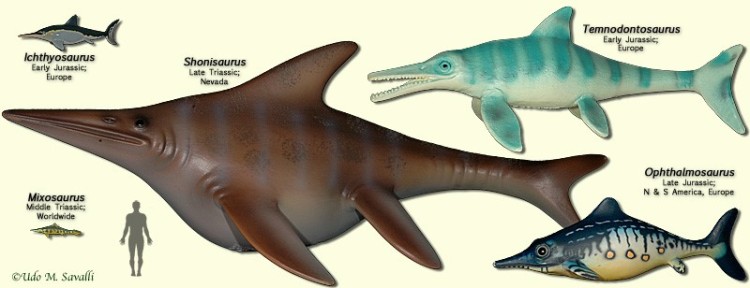
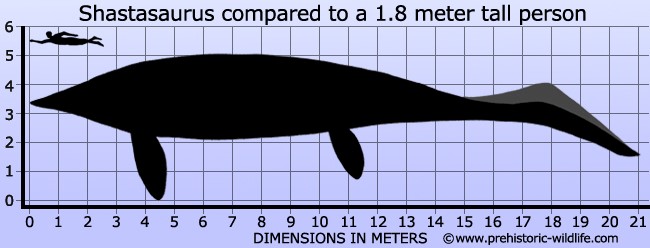
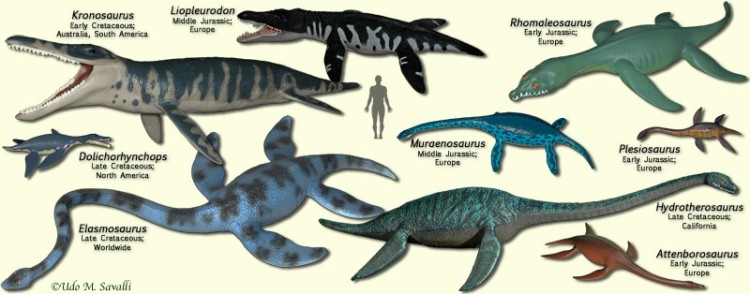
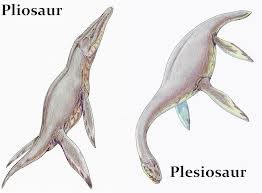
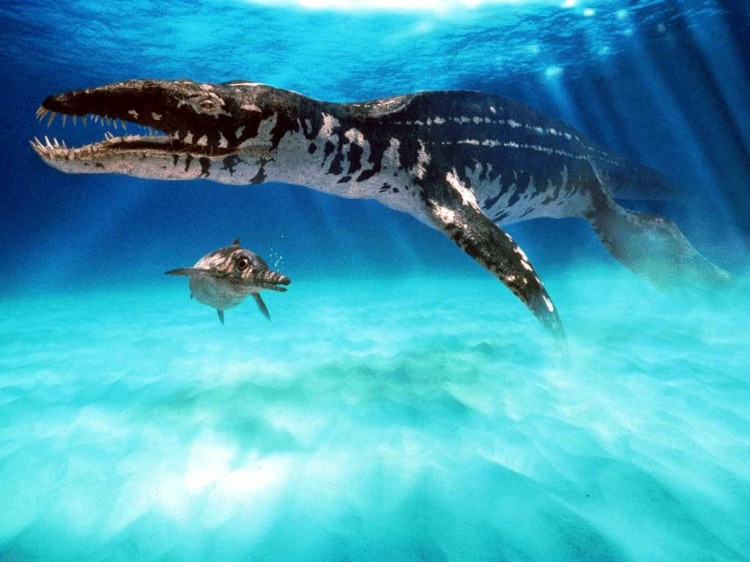
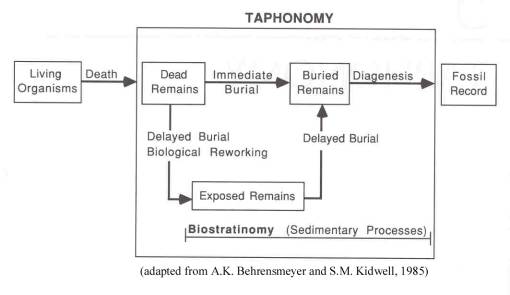
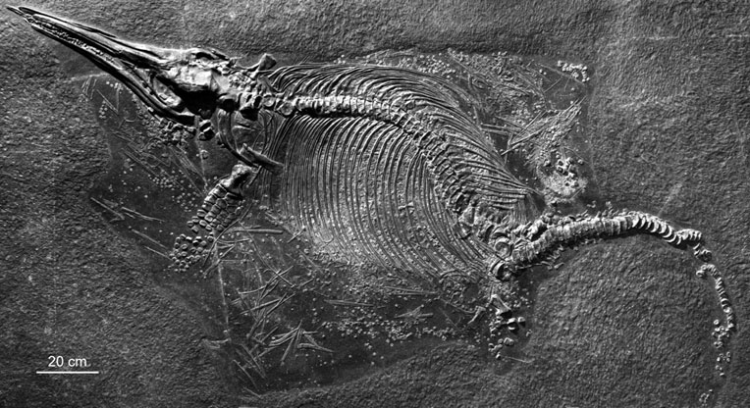
![1331069db9[1]](https://biomgroup.files.wordpress.com/2014/01/1331069db91.jpg?w=692&h=243)


